Circling back
Image: Charles R. Lympany, courtesy of Chris Taylor, via yesterland.com
In 1960, the astounding “America the Beautiful” film was brought home. Well, its third home, in its third country. “America the Beautiful” opened at Disneyland in 1960. It played until the arrival of a Lost Legend: The Peoplemover and Walt’s New Tomorrowland in 1967, when the 360-degree theater was expanded to take over the land’s north showbuilding entirely. A newly filmed presentation (still titled “America the Beautiful”) was developed for an updated, nine-screen format called Circle-Vision 360°.
Of course, Disney’s use of Circle-Vision technology was just getting started.
Just a few years later, Magic Kingdom opened at the brand-new Walt Disney World in Florida, with its own nine-screen Circle-Vision 360° quickly opening with “America the Beautiful” on display. Just like at Disneyland, Magic Kingdom’s installation was given a prominent position in one of the mirrored showbuildings along the land’s main entry (albeit, in the south building rather than Disneyland’s north... see the screen protruding in the lower right above?)
Over the next two decades, Magic Kingdom’s Circle-Vision theater would play “Magic Carpet Around the World” (1974 – 1975), an encore of “America the Beautiful” (1975 – 1979), “Magic Carpet” once more (1979 – 1984), and the new “American Journeys” for the next decade.
Image: Disney
Unsurprisingly, the inspiring film format – perfect for a travelogue – became the de facto attraction in EPCOT Center’s World Showcase upon its 1982 opening. Both the China pavilion and the Canada pavilion offered Circle-Vision films as cultural ambassadors, capturing the Wonders of China and O Canada!, respectively. Impressions de France in the France pavilion likewise resembles the technology, but with only five screens in a 200° wrap-around configuration.
Image: Disney
The year after EPCOT Center opened, Tokyo Disneyland debuted with a Tomorrowland closely modeled off of Florida’s, including a Circle-Vision theater in the “south” showbuilding along the land’s entry corridor. But upon its 1983 opening, a glaring problem was growing...
Yesterdayland
When first pioneered by Walt and his designers, the idea of a 360° theater was sincerely a cutting-edge display of the filmmaking of the future – a glimpse into what the next leap forward in movies might be.
Image: Disney
By its Japanese debut in 1983, Circle-Vision was approaching its 20-year anniversary, and it had to have been clear that the technology wasn’t really going to take off in an applicable way outside of Disney Parks. It's really not so different from the Monorail or the Peoplemover, which Walt had intended as mere prototypes of actual, utilitarian technologies of tomorrow, but had become so closely associated with theme parks as to negate their public use.
Meanwhile, the new Lost Legend: Captain EO parked directly across from Tokyo’s Circle-Vision theater offered a much more current idea of cinema’s next steps: starring a true global celebrity and crafted by the filmmakers behind Star Wars, Indiana Jones, and The Godfather, Captain EO was a pop culture phenomenon. It was also the debut of the “4-D” film, mixing in-theater special effects like fog, lasers, and starfields. Now this was the future of film, leaving Circle-Vision and its “American Journeys” travelogue in the dust.
But Circle-Vision wasn’t the only problem. At the three Tomorrowlands across the globe, Imagineers began to face the dreaded “Tomorrowland Problem.” We’ve discussed this recurring roadblock in a number of Lost Legends features, but it amounts to a simple concept: tomorrow always becomes today. And if you wait long enough, it’ll become yesterday, too.
Put another way, if Tomorrowland were to be dedicated to actual displays of potential futures, emerging technologies, and sincere innovation, each Tomorrowland across the globe would need constant, continuous, and costly upgrades, forever. It wasn’t just that Flight to the Moon would need to become Mission to Mars (which it did), or that the Monsanto House of the Future (with its groundbreaking microwave oven) would need demolished for an icon of the Atomic Age – Lost Legend: Adventure Thru Inner Space… No… The very fabric of Tomorrowland would need to change… and keep changing.
And plunged into the dark, dismal, gritty vision of the future that had invaded pop culture during the 1980s (thanks to Alien, Blade Runner, Star Wars, and even TRON), the hippy-dippy, sleek, concrete, Space Age influenced Tomorrowlands in California, Florida, and Tokyo were looking like yesterday’s news. An optimistic world of swirling white and red rockets, pastel Peoplemovers, and gentle, geometric architecture looked naïve and outdated.
Change was needed.
And change was coming.
Prototyping Parisian possibilities
Across the globe, Tomorrowlands not only featured outdated attractions showcasing uninspiring technology disconnected from the modern world… they also looked like products of another time… though not long ago enough to make them nostalgic and quaint. Luckily, Disney had just the project on their docket that would let them experiment with new possibilities for Tomorrowland.
Image: Disney
And voila, we’ve arrived at a pivot point common to so many of our in-depth features: Disneyland Paris. The introduction of Disneyland Paris (as EuroDisney) in any story is typically accompanied by how the French park changed everything (for better or worse, thanks to its ambition and financial failure, respectively). Luckily, this is a case of the former: a testament to Paris’ brave new way of doing this and the radical reinvention is inspired.
Designers responsible for the Parisian park recognized that – even before the first shovel of dirt had moved – the French press and public had mutually decided that they did not want Disneyland Paris. They launched an all-out media assault on the “cultural imperialism” of such a rooted American brand, akin to placing a McDonald’s atop the Eiffel Tower. Prominent journalists wrote of their hopes that rebels would burn Disneyland down, and numerous news stories throughout its construction suggested boycotts.
Image: Disney
What they didn’t know is that Disney was aware of the fine line they balanced in creating a European park for European guests, and Disney Legend Tony Baxter and his team set out to ensure that Disneyland Paris felt right at home in the French countryside. They meticulously recrafted Disneyland’s storied lands (each, of course, rooted in Americana) to redevelop them into literary, romanticized realms that would appeal to European audiences.
Image: Disney
Take Frontierland, which dropped its associations with Americans’ 1950 “Old West” fascination (Tom Sawyer, The Lone Ranger, Zorro) and instead was crafted into a land built around a love story that absorbed all of the rides, shows, attractions, and even restaurants in the land into one overarching frame story. We told that incredible tale in an in-depth feature, Modern Marvels: Phantom Manor.
Likewise, each of Disney's Tomorrowlands was modeled around a common ancestor; each a celebration of the Space Age. Products of pure Americana, those Tomorrowlands were anchored in mid-century wonder, Googie architecture, NASA, rockets, simple geometry, concrete towers, and a sleek, sterile view of the future through the lens of the Space Race.
There could be nothing less interesting or inspiring to French audiences of the 1990s. Which is why Disneyland Paris didn’t have a Tomorrowland at all. And this radical shift in what the concept of Tomorrowland could mean is exactly what created The Timekeeper, spreading this final Circle-Vision production around the world... On the next page, we'll explore the two ambitious Tomorrowlands that emerged and step into The Timekeeper that became a "Sci-Fi Double Feature" in both. Read on...
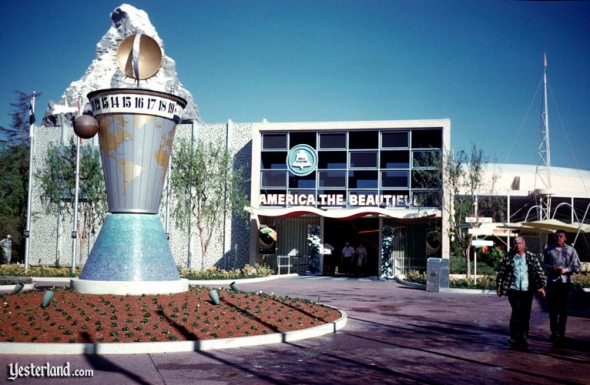

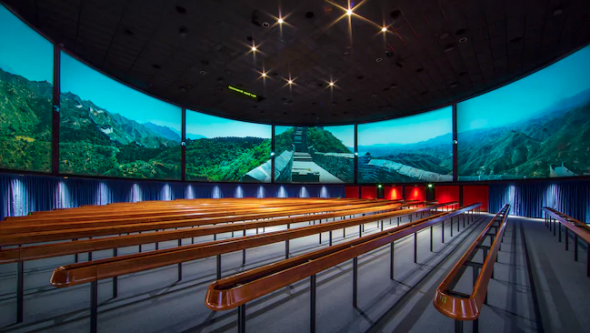
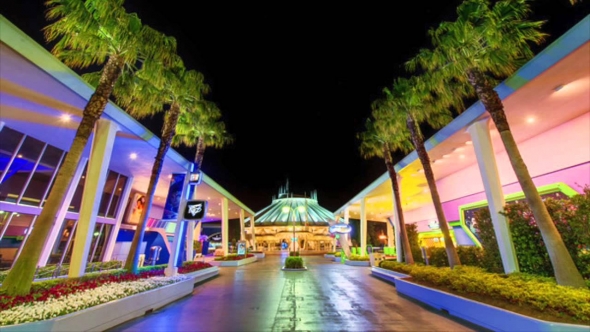
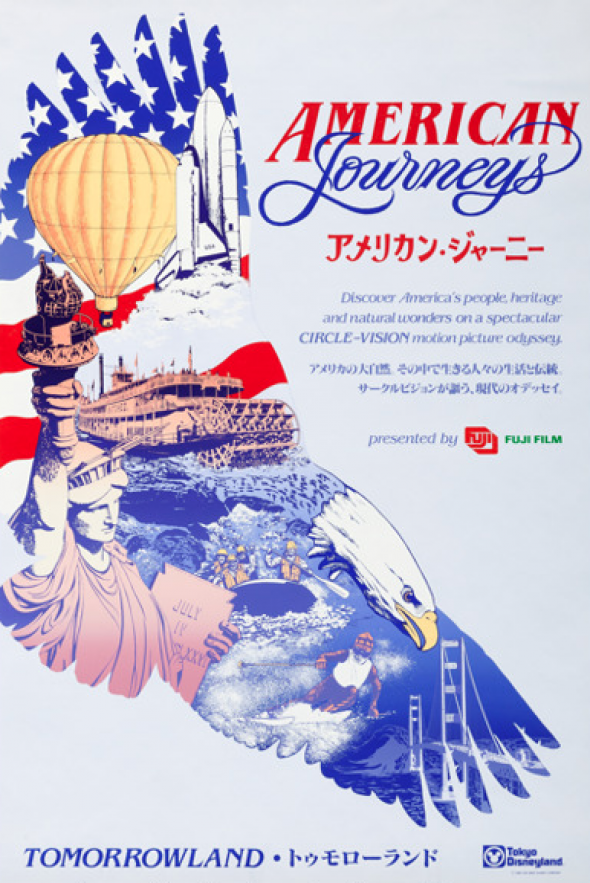


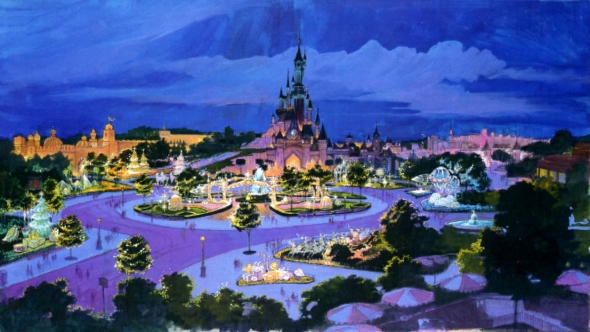


Comments
Thank you for this article. Oddly, it does definitely seem that the age of the IP-focused stuff is far from over, what with Tron coming to Tomorrowland, and across the resorts on both coasts, Star Wars Galaxy's Edge, even though things are seemingly becoming more and more detailed, and in my opinion it is very exciting to hear about what they are doing.
What do you think of this idea, of creating very detailed concepts for IPs, almost like living worlds? are they good ideas? Also though, do you think they might create an attraction with a theme park only character ever again?